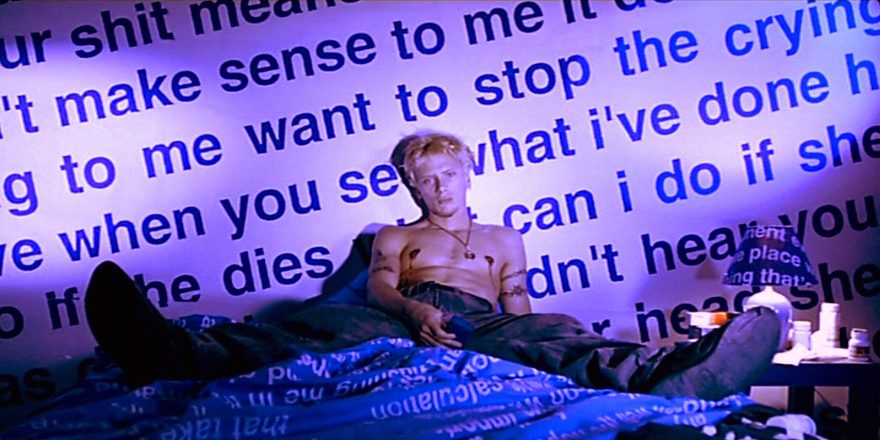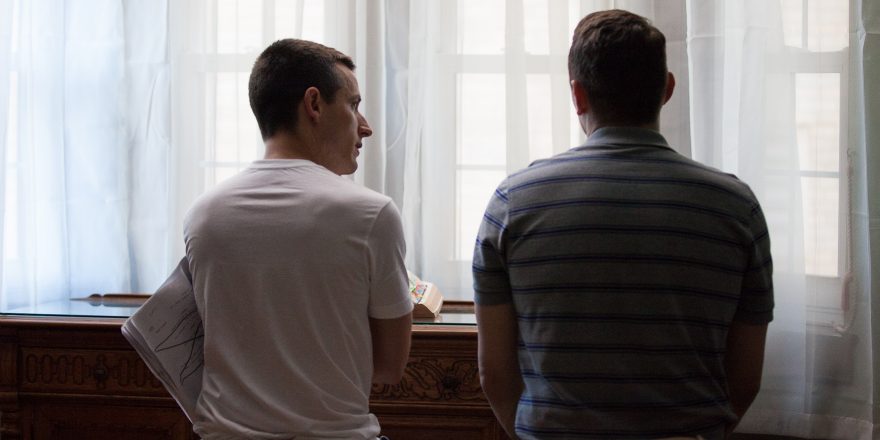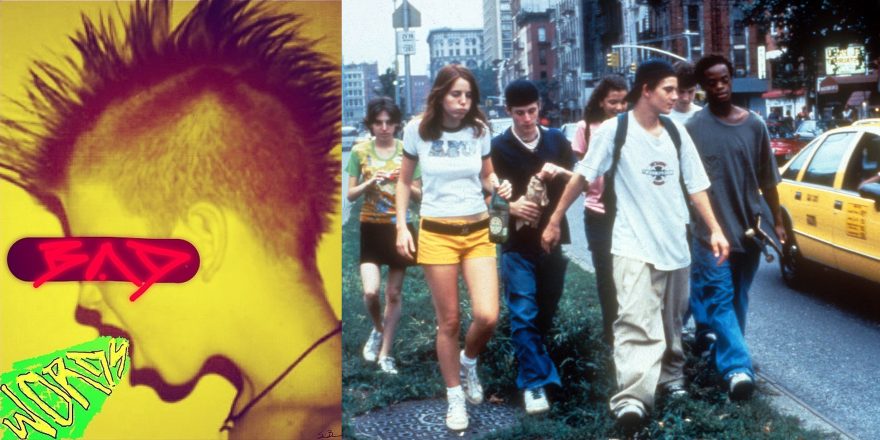On May 9, 2017, Gregg Araki’s Nowhere turned 20 and it’s about time we reappraised this undervalued, iconoclastic film which blurred boundaries, broke barriers – and changed my life.
Barely a teenager in the fall of 1998, I was struck with a debilitating case of the flu. For one week, like Andy Warhol convalescing as a child (or so I imagined), I was couch-ridden. Each day I would scrawl a list of films for my mom to rent from Queen Video, the cool rental store downtown. She would return to our suburban Toronto home with a stack of VHS tapes and while my high school peers learned … whatever it is they learned in class that week, I programmed my own film festival. Of all the films I watched, Gregg Araki’s Nowhere blew my mind and helped open my eyes to what I wanted to do: make films. It continues to inform my work and influence pop culture in general.
Concluding Araki’s “Teen Apocalypse Trilogy,” Nowhere was initially criticized for being nihilistic, vulgar and vacuous. It is the least discussed film of the cult trio that includes Totally Fucked Up (1993) and The Doom Generation (1995). Featuring gratuitous sex, disturbing violence, drug use and a bleak ending that would make Kafka come in his pants, Nowhere is outlandishly stylish, absurd and provocative – yet substance is not sacrificed. The film slyly satirizes the teen movie genre itself and our insatiable hunger for love while also scrutinizing celebrity obsession and the commodification of spirituality.
Nowhere focuses on the sensitive and naïve Dark (James Duval) as he struggles with the disillusionment, sexual awakening/confusion and pressures of adolescence. An aspiring filmmaker who carries his camcorder wherever he goes, Dark is morbid, melodramatic and detached. “Sometimes I feel so old-fashioned, from another planet,” Dark laments, endearing himself to the angst-ridden outcast that I was. Never before had I identified so strongly with a character on screen. Dark’s loneliness and uncertainty reflected my own. Even though the film ends with Dark hopeless and bloody, I felt assured that I was not alone.
Over the course of a single day in L.A., Dark interacts with a refreshingly diverse cast of characters including his bisexual, polyamorous girlfriend Mel (Rachel True), Mel’s bitchy girlfriend Lucifer (Kathleen Robertson) and the shy, stuttering boy he is developing feelings for, Montgomery (Nathan Bexton). Never before had I seen sexual fluidity depicted so openly. The teens in Nowhere freely pursue their erotic fantasies and fuck whomever they want. To them, restrictive labels and boundaries are uncool. Nothing is black and white in the film and anything is permitted in its flashy, neon-saturated world. This contradicted the rigid codes and conventions governing the halls of my bland high school and any teen movie I had seen before. Though doom and annihilation preoccupy the characters in Nowhere, the film offered me hope for a more exciting future: maybe I too could follow a group of Scary Drag Queens into the night.
The Godard of the MTV Generation, Araki has always employed avant-garde aesthetic and narrative strategies in his work, and his films defy easy categorization. Structurally akin to maniacally flipping through TV channels, Nowhere similarly breaks genre barriers.
The VHS cover of Nowhere proudly describes the film as “Beverly Hills 90210 on acid,” and at times it feels like a raunchy and raucous, drugged-out episode of that show. Hilarious and excessive, Nowhere is also a dark comedy that never takes itself too seriously. A favorite scene features cameos by Shannen Doherty, Rose McGowan and Traci Lords as “Val-Chicks” spouting dialogue seemingly ripped from the pages of Bret Easton Ellis’ Less Than Zero. However, the most interesting and surprising facet of Nowhere might be Araki’s flirtation with science fiction, later explored more deeply in his 2004 film Mysterious Skin. Featuring a reptilian alien wielding a ray gun and ending with a body metamorphosis, Nowhere mobilizes the sci-fi genre to comment on the alienation experienced in adolescence when you are trying to figure out who you are and where you belong.
In Nowhere, style is substance. Its vibrant visuals, disorienting editing and aural bombardment contribute to the narrative and the film’s visceral impact. The meticulously designed sets, bold use of color and lighting techniques directly inform the content and enhance the story.
The film’s profusion of Pop Art (a drug dealer is even beaten to death with a can of Campbell’s tomato soup), candy-colored costumes and dazzling art direction have elevated Nowhere to style-icon status as it continues to inspire a new generation of creators. Its influence is evident in Stephen Dunn’s Closet Monster (2015), the films of Xavier Dolan, and collections by the Blonds and Kenzo (see Here Now, the short fashion film and pseudo-sequel to Nowhere Araki was commissioned to make for Kenzo’s fall/winter 2015 collection).
Unsurprisingly, the most striking stylistic element of a film that derives its name from an album by Ride is its soundtrack. From the use of Slowdive’s haunting “Avalyn II” in the opening credits to the bittersweet twinge of The The’s “Love is Stronger Than Death” at the gory conclusion, the soundtrack is a perfect ’90s mixtape, underscoring the emotions and themes of the film. Composed of B-sides and remixes, the soundtrack introduced new artists and rare tracks by bands we already loved. The music in Nowhere epitomized cool in the late ’90s and I rushed out to buy the CD at my local record store. The album became the soundtrack to my adolescence. As the atmospheric shoegaze sound experiences a resurgence with pioneers Slowdive and Ride releasing new albums this year, Nowhere sounds as timely as ever.
Derided by critics and dismissed by audiences upon release, Nowhere has stood the test of time. Its irreverent and anarchic sexual politics still seem radical and relevant, unlike the conservative, heteronormative ideologies proudly perpetuated by trite, tepid teen films pumped out by Hollywood in the ’90s. Nowhere is a teen movie in which the stereotypical popular kids are thankfully omitted, like aliens abducted them. Other archetypes and hallmarks of the genre are revolutionized or rejected. Queers and freaks take center stage and they aren’t concerned with performing on the football field or scoring at the prom. They unapologetically fuck, take drugs, make art, play gigs at The Butt Crack, yearn for love and attend an epically hedonistic party at Jujyfruit’s place.
Araki understands that as a teen, your problems seem magnified, taking on apocalyptic proportions. Your girlfriend abandoning you at a party and leaving with buff, blond twins named Surf and Ski is like the end of the world. “When you’re that age, everything is life or death, everything is hyper-accentuated,” Araki claimed in original press material and no other teen movie articulates this feeling better than Nowhere. Additionally tackling serious issues such as rape and suicide from an outsider perspective, Nowhere is a teen movie for the marginalized – not the masses. It is not surprising that Araki was hired to direct episodes of Netflix’s 2017 hit 13 Reasons Why (see Tape 4, Side A and B) in an effort to give a show dealing with the same subject matter some of Nowhere’s edgy sensibility.
As a teenage loner recognizing and accepting his queerness, I felt ostracized. Religiously revisiting Nowhere on my own became a form of escape. I could shun the mainstream with Dark and his hip friends and revel in the (homo)erotically charged images. The film gave me hope that one day, I too could find my niche or tribe out there somewhere, as Dark puts it, “in this huge, horrible, unhappy universe …”
In the Summer 2017 issue of Dazed, Sofia Coppola states, “So much of that [adolescent] age is about daydreaming and fantasizing because that’s how you figure out what you want to be.” Nowhere sparked my adolescent fantasies and Araki’s brazen violation of rules regarding teen representation, genre, and conventional storytelling and editing, galvanized me as an aspiring director.
For this filmmaker and former misfit youth, Nowhere is the ultimate teen movie.







